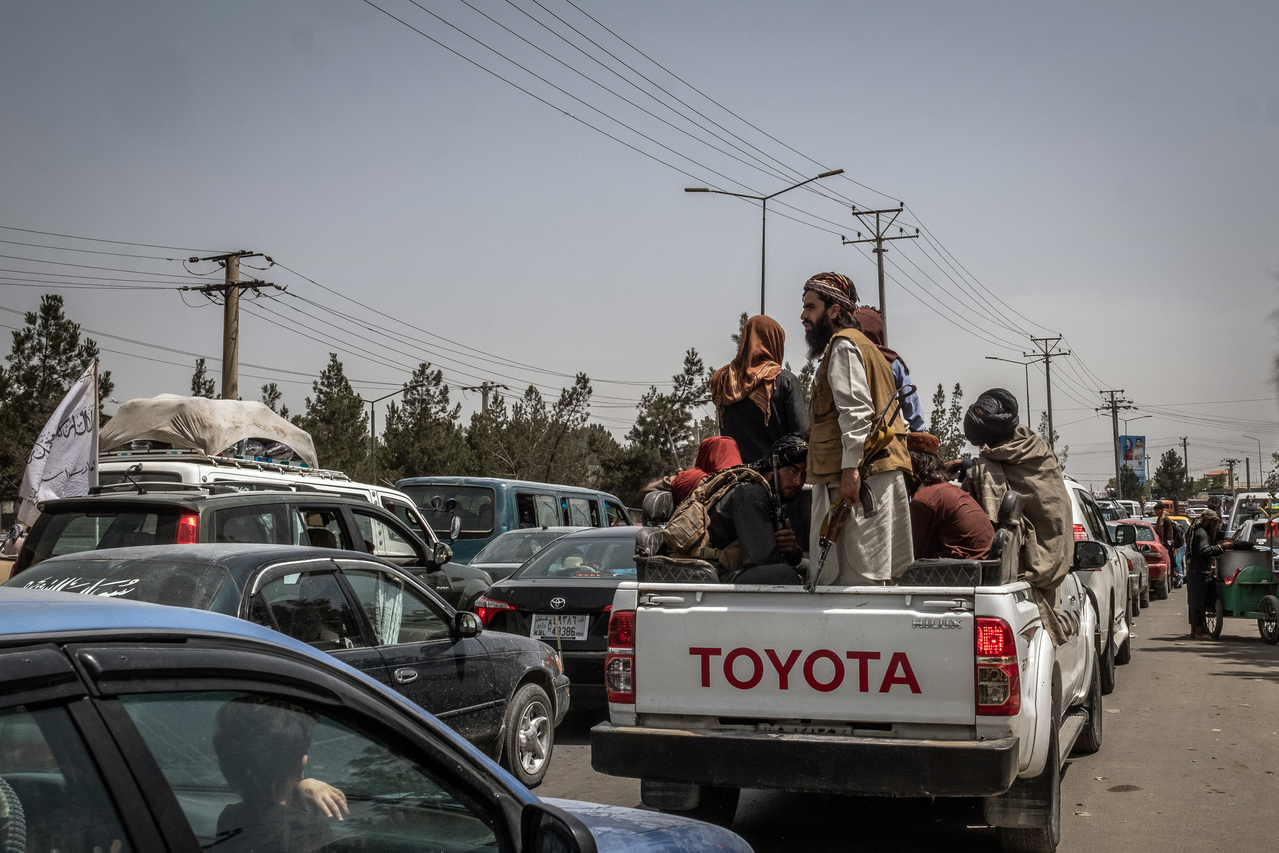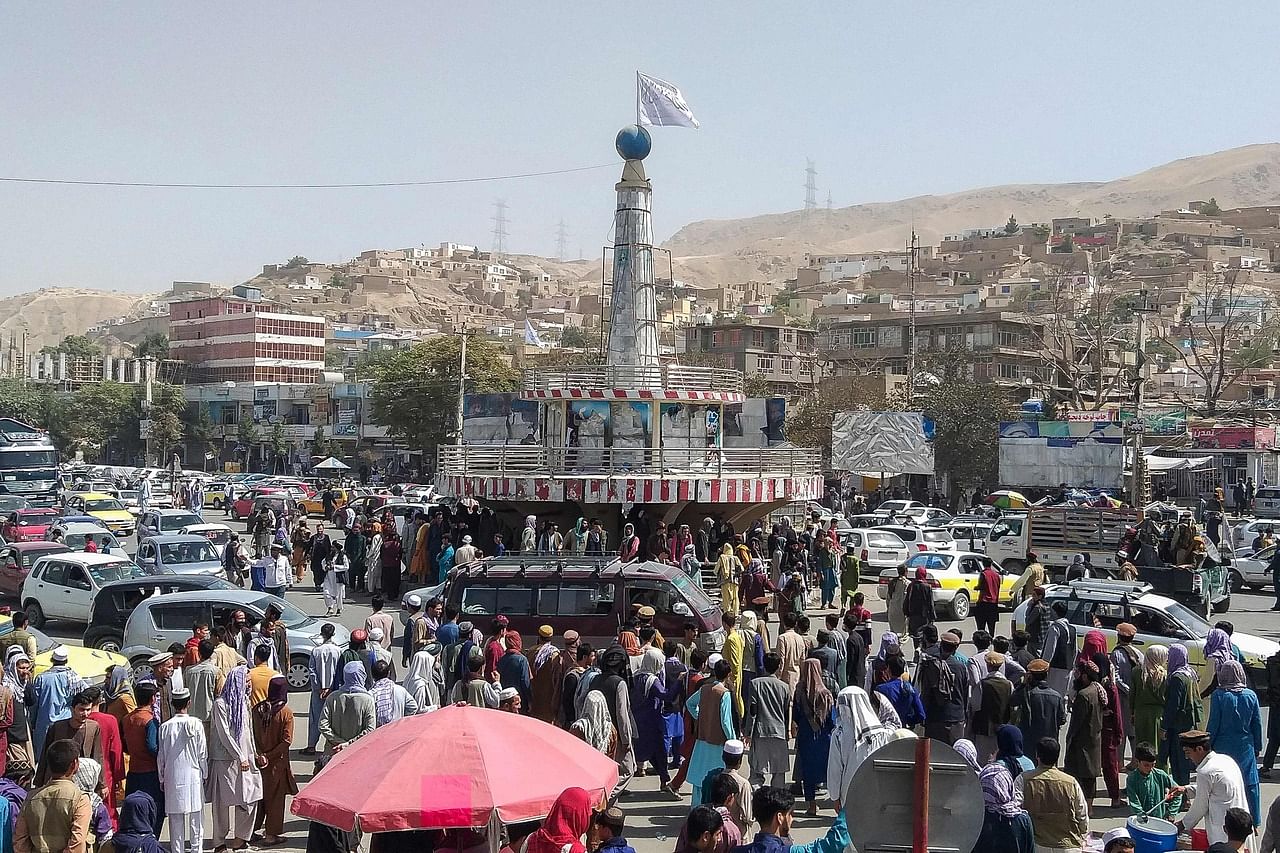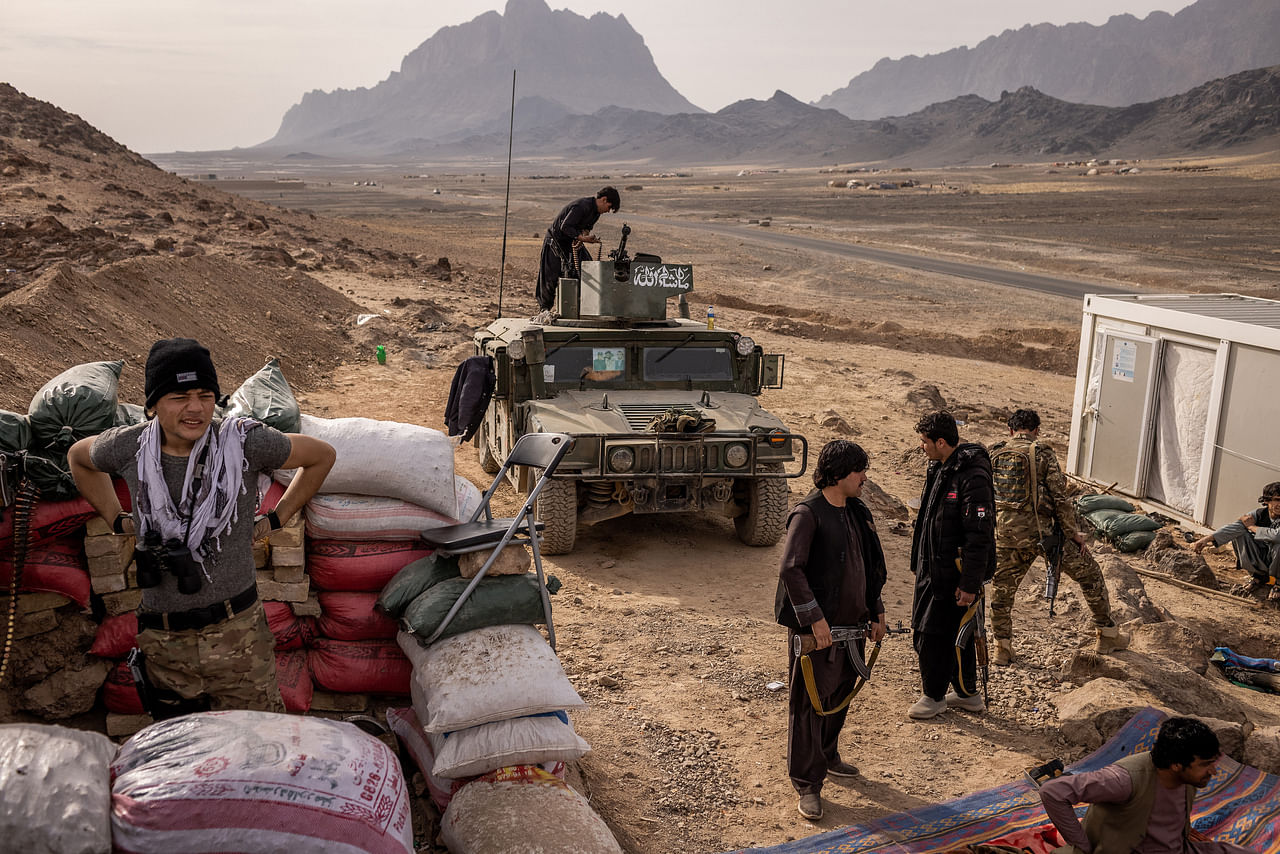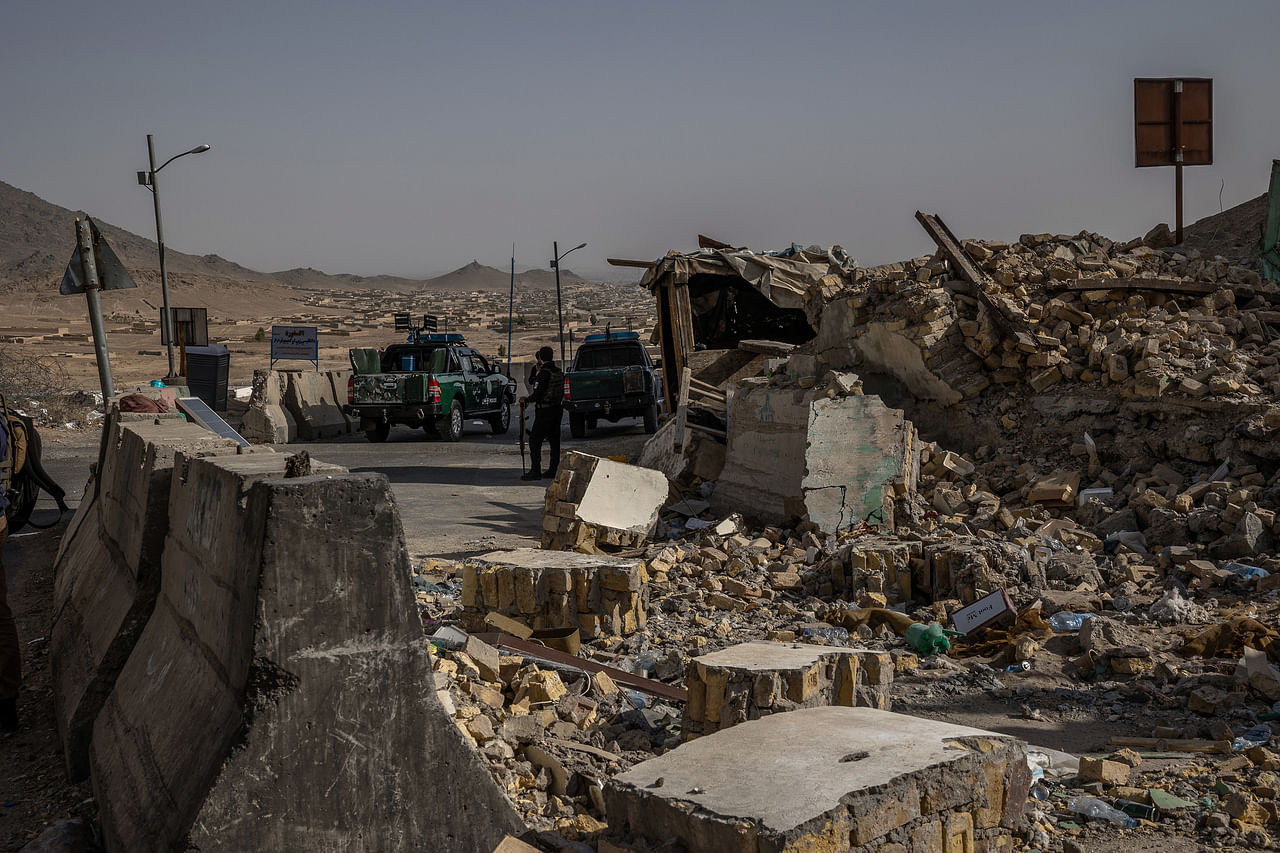Coercion and persuasion: The Taleban strategy that seized Afghanistan
Sign up now: Get insights on Asia's fast-moving developments

The Taleban's strategy of coercion and persuasion unfolded for months as a focal point of the insurgents' new offensive this year.
PHOTO: NYTIMES
Follow topic:
KABUL (NYTIMES) - In early May, a Taleban commander telephoned Mr Muhammad Jallal, a tribal elder in Baghlan province in northern Afghanistan, and asked him to deliver a message to Afghan government troops at several bases in his district.
"If they do not surrender, we will kill them," Mr Jallal said he was told.
He and other tribal elders complied. After several rounds of negotiations, two government bases and three outposts surrendered without a fight. More than 100 security forces handed over weapons and equipment and were sent home unharmed.
The Taleban's strategy of coercion and persuasion was repeated across the country, unfolding for months as a focal point of the insurgents' new offensive this year. The militants cut multiple surrender deals that handed them bases and ultimately entire provincial command centres, culminating in a stunning military blitz this summer that put the militants back in power two decades after they were defeated by the United States and its allies.
The negotiated surrenders were just one element of a broader Taleban strategy that captured heavily defended provincial capitals with lightning speed and saw the insurgents walk into the capital, Kabul, on Sunday (Aug 15) with barely a shot fired. It was a campaign defined by both collapse and conquest, executed by patient opportunists.
Each surrender, small or large, handed the Taleban more weapons and vehicles - and, vitally, more control over roads and highways, giving insurgents freedom to move rapidly and collect the next surrenders as the security forces were progressively cut off from ammunition, fuel, food and salaries.
Each victory also added to a growing sense of inevitability that the Taleban would eventually win, especially after the Taleban poured so many resources into winning the north, a traditional stronghold of anti-Taleban militias. As those outposts and districts fell, the Taleban gained important propaganda victories, quickly spreading the word that the Taleban could overcome even dogged resistance and would keep their word to allow soldiers and policemen to walk away with their lives.
The result was a lopsided fight between an adaptable and highly mobile insurgent juggernaut and a demoralised government force that had been abandoned by its leaders and cut off from help. Once the first provincial capital city surrendered this month, the big collapses came as fast as the Taleban could travel.
The Taleban victory came just four months after US President Joe Biden announced on April 14 that he would honour a deal with the Taleban signed by the Trump administration to withdraw all US troops beginning on May 1. The announcement sank the morale of already beleaguered security forces and emboldened the Taleban, which had failed to honour most pledges under the February 2020 agreement.
The Taleban seized the advantage in May, crushing government troops now forced to defend themselves, with only an occasional long-distance US airstrike to help hold off Taleban surges. The militants quickly expanded their control among the country's 400-odd districts from 77 on April 13 to 104 on June 16 to 223 on Aug 3, according to the Long War Journal at the Foundation for Defence of Democracies.
The Taleban also received money, supplies and support from Pakistan, Russia and Iran, analysts said. That included 10,000 to 20,000 Afghan volunteers sent from Pakistan, a Taleban safe haven, and thousands more Afghan villagers who joined the militants when it became clear they were winning, said Mr Antonio Giustozzi, a London-based analyst who has written several books on Afghanistan.
The volunteers swelled Taleban ranks to more than 100,000 fighters from most analysts' estimates of 60,000 to 70,000, Mr Giustozzi said. That was more than enough to crush a government force listed at 300,000 on paper but hollowed out by corruption, desertion and a staggering casualty rate; US officials have said that perhaps only one-sixth of that total was in the fight this year.
The key to victory, Mr Giustozzi and other analysts said, was the Taleban's plan to threaten and cajole security forces and government officials into surrendering, first at the checkpoint and outpost level, then the district and provincial level as they swept through the countryside.
"They contacted everyone and offered the chance to surrender or switch sides, with incentives, including money and rewarding people with appointments afterwards," said Mr Giustozzi, a research fellow at the Royal United Services Institute in London and author of the 2019 book, The Taleban At War.
"A lot of money changed hands," he added.

A Taleban flag fluttering at the main city square in Pul-e-Khumri in Baghlan Province on Aug 11, 2021.
PHOTO: AFP
The Taleban exploited Afghans' resentment towards a corrupt and ineffective government that was unable to resupply its forces or mount an effective media campaign to rally the public to its side. By contrast, the Taleban pounded home a message through social media and village elders that the government was illegitimate and the militants would soon restore their Islamic rule.
"Their outreach was fantastic. Their planning was very good. They managed the element of surprise," said Mr Saad Mohseni, CEO of Moby Media Group, which oversees Tolo News, the leading independent news network in Afghanistan.
"They capitalised on intratribal, ethnic, religious and ideological differences to win over people," he added. "And they made the most of people's frustrations with the government."
The nearly 20-year war was perhaps all but won last winter, when the Taleban seized control of the country's major highways. Government forces had only lightly defended the roadways, preferring to hunker down in the relative safety of outposts, bases and provincial command centres.
That was part of a government strategy, urged by the US military, to cede rural areas and focus on protecting urban centres and major provinces.

Afghan security forces at an outpost on the periphery of Panjwai on Jan 30, 2021.
PHOTO: NYTNS
Initially, dominance on the highways allowed the Taleban to cut off district-level checkpoints and outposts by forcing negotiated surrenders or simply overpowering outgunned security forces. By midsummer, they were able to besiege provincial capitals cut off from resupplies or reinforcements.
With the roads closed to government convoys, there was enormous pressure on the game but struggling Afghan air force to deliver close air support, troops and supplies. But the air force could not cope with the burden. Nor could US-trained commandos, who were dispersed to hot spots to perform duties abandoned by soldiers and police.
At the same time, the militants raised millions of dollars by taxing trucks and other vehicles - even providing written receipts good across the country. And by controlling the highways, they were able by July to seize control of several border crossings, appropriating millions in customs duties intended for the government.
"It's Military 101: Whoever controls the supply lines controls the battlefield," said Ms Sarah Kreps, a former US Air Force officer and a professor of government and law at Cornell University.
In the north, the government never recovered from the surprise summer attacks on anti-Taleban strongholds in the region, Mr Giustozzi said. The government had expected attacks in the Taleban heartland in southern Afghanistan, where government forces mounted fierce resistance in Kandahar and Helmand provinces before collapsing earlier this month.

A police outpost destroyed by the Taleban after the group had briefly overrun it in Kandahar, on Aug 4, 2021.
PHOTO: NYTNS
"The Taleban adopted a strategy to push key northern warlords, to push them and their militias to defend their own areas, essentially preventing them from cohering a national defence," Ms Kimberly Kagan, founder and president of the Institute for the Study of War in Washington DC, wrote in an e-mail.
To the very end last week, the Taleban continued to pursue their strategy of forcing negotiated surrenders.
By Aug 14, Mr Sahaifullah Andkhoie, a pro-government militia commander in Maimana, the capital of Faryab province in northern Afghanistan, said he had received several calls from Taleban commanders offering surrender terms.
"The Taleban were reassuring us that if we surrender, they will not kill us," Mr Andkhoie said. "Then I saw the Taleban were seizing weapons and ammunition of the regimental headquarters."
That night, the province fell to the Taleban. Fighters and government officials surrendered en masse, handing over a trove of weapons and equipment to the militants.
For nearly 20 years, with the backing of US and Nato forces and airstrikes, Afghan government forces had been able to hold on to all 34 provincial capitals despite persistent attacks by the Taleban. That is what made events earlier this month so extraordinary - the rapid collapse of more than 15 major provincial capitals in a span of just nine days.
The first provincial capital to topple was Zaranj in Nimruz province in the remote southwest, which surrendered on Aug 6. It was lightly defended because government forces were focused on holding the much larger southern cities of Kandahar and Lashkar Gah.
Each subsequent Taleban victory freed up more fighters to assault larger government provincial capitals, moving quickly and lethally along highways they now owned. Those capitals toppled in rapid succession as soldiers surrendered, deserted or simply took off their uniforms and disappeared.
Troops in Kandahar and Lashkar Gah put up a sustained fight, but those capitals collapsed on Friday. On Sunday, Taleban fighters sped down wide open highways on motorcycles and captured government Humvees and police vehicles, rolling uncontested into the nation's capital.

